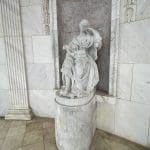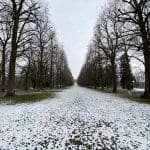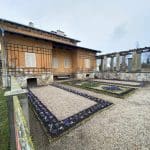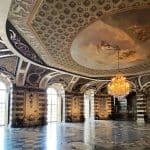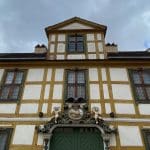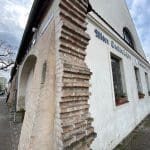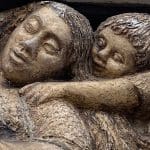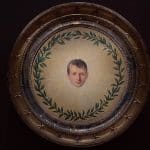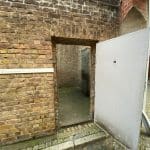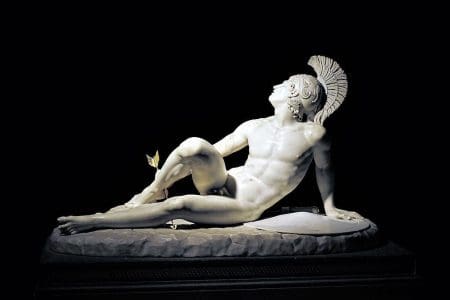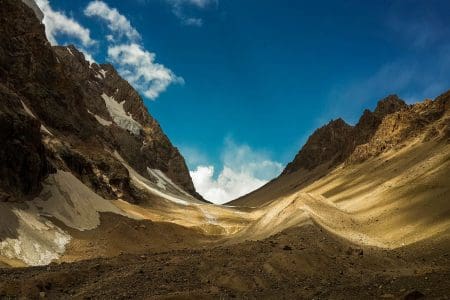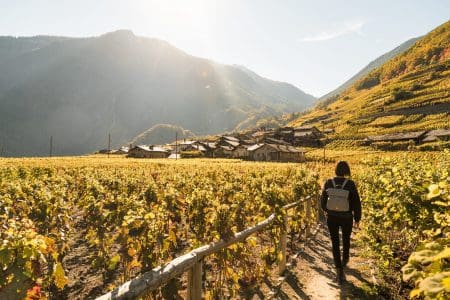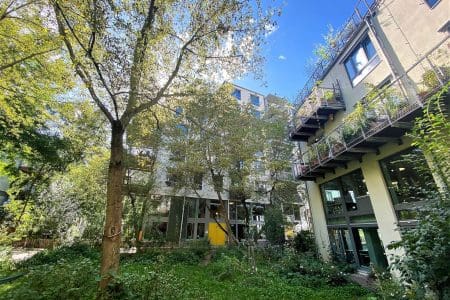Mark Bibby Jackson stops off at Potsdam Germany on his way to Berlin, and falls in love with the wide-open spaces of Sanssouci Park.
There is something wonderfully rewarding about visiting a place off-season. The streets tend to be relatively empty, museums are uncrowded, restaurants can be walked into rather than booked a week in advance, but above all there is space, glorious space, for you to enjoy and to allow you to feel the destination devoid of an excess of tourists.
My visit to Potsdam Germany was at the start of March, to coincide with the ITB Berlin a mere 30 minutes away by S-Bahn, when snow was still on the ground and spring had yet to break through.
Potsdam Sanssouci Park

Coming from London I am accustomed to large urban parks, but nothing really had prepared me for Sanssouci Park. Created for Frederick II (Frederick the Great), Sanssouci – from the French for ‘without worry’ – now spans some 290 hectares, and is reckoned to be one of the most beautiful parks in Germany. It was added to the Unesco World Heritage List in 1990.
Frederick sketched several of the plans for the many buildings and palaces in Sanssouci, which he intended to serve as a pleasure park for his people. Work commenced in 1744, with the Italian-style pleasure garden and deer park completed in the 1750s and 1760s.
My tour, led by the excellent Eva Müßener, started at the beautiful Peace Church built in 1848 for Frederick William IV. Eva explained how Frederick the Great placed a great importance on utilitarianism and wanted the park to be for the people, with a Gallery built that was open to the public.
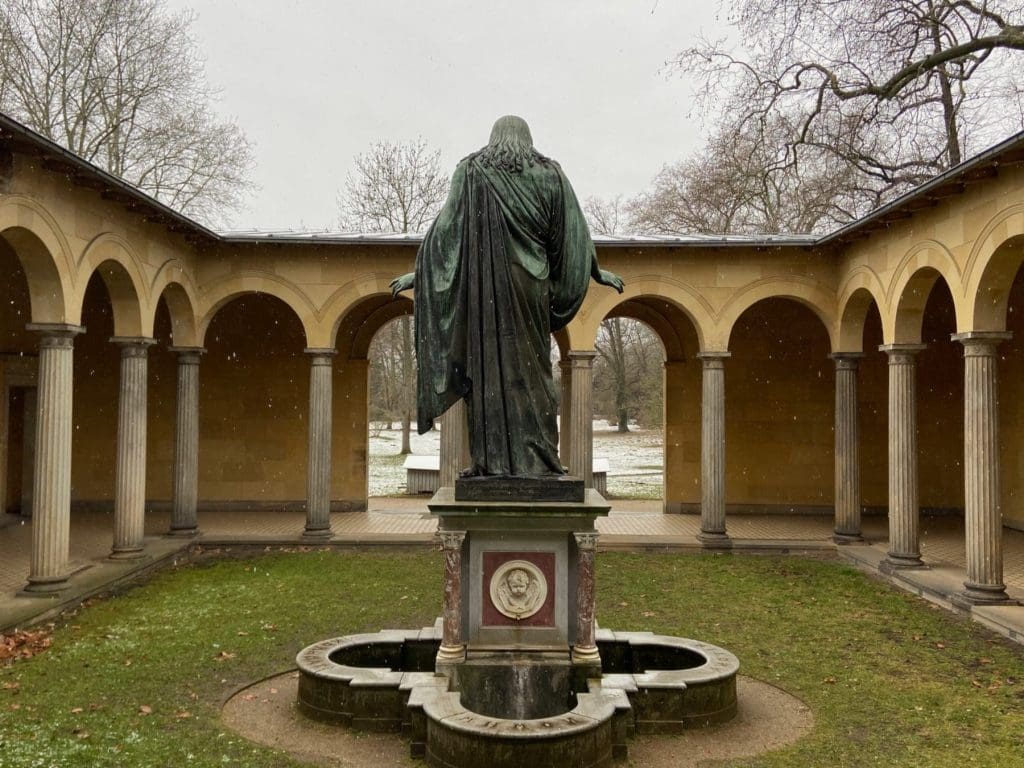
The park has thousands of fruit trees, as well as palms and other plants and trees. However, it is a victim of climate change, due to a lack of rain and snow, as Eva explained to me somewhat ironically as snow was falling on my head.
When the rain does come it is more torrential in nature, which in itself damages the landscaping and means the water does not penetrate deep into the soil. Apparently, beneath 50 centremetres it is dry. This means that sadly many of the more mature trees, some of which are more than 300 years old, will die. Around the park you can see saplings which the park keepers hope will in time replace the older trees.
Sanssouci Potsdam Palaces
Sanssouci Park also has a number of places including Sanssouci Palace that was built in 1745 as Frederick the Great’s summer house. Frederick wished to be buried next to his greyhounds on the vineyard terrace in a simple ceremony. Sadly, his wishes were not granted, as he was given a grand state burial and only interred next to Sanssouci Palace in 1991. You can stroll up to his grave which has potatoes placed around it. Frederick was also dubbed the Potato King for his insistence on converting his people to growing the common spud.
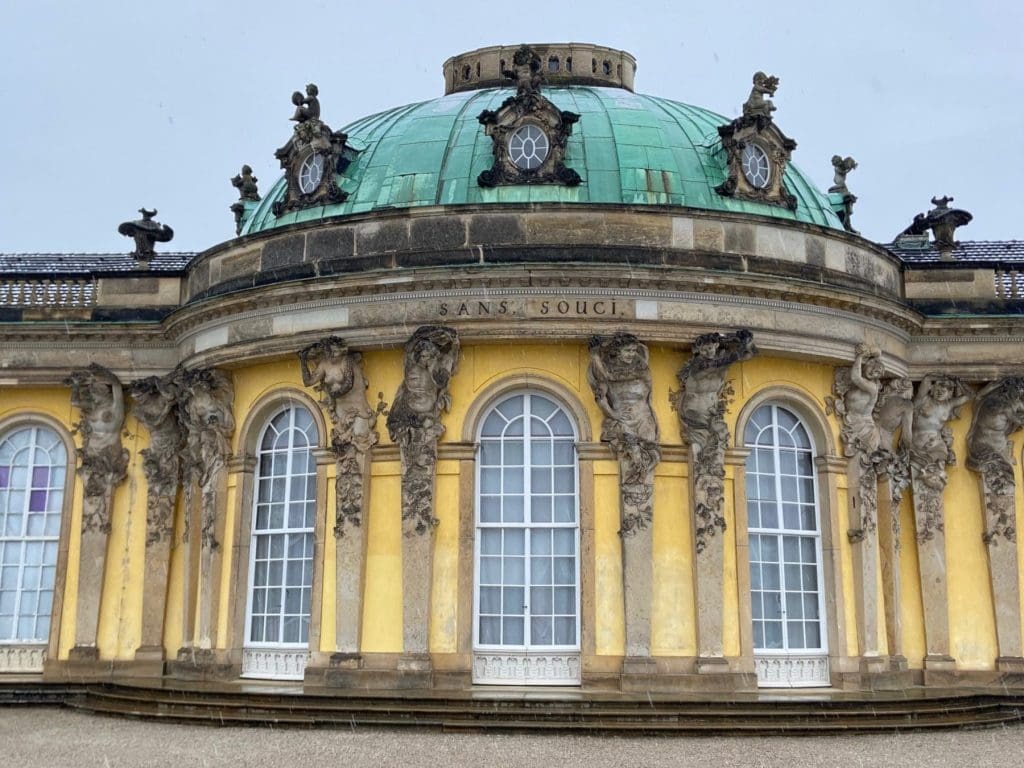
Close to it is the splendid Orangery Palace built for Frederick William IV from 1851 to 1860, and which reflects the king’s love for Italian architectural style. It is here that the palm and fruit trees are stored over winter.
The park has a number of other palaces and buildings of interest including the Belvedere, Dragon House, Temple of Friendship and Antique Temple, which was built in memory of Frederick’s sister, Princess Wilhelmine of Prussia.
New Palace
Perhaps the most striking building in Sanssouci Park is the New Palace, built between 1763 and 1769. According to Eva, the Great Frederick was not a big fan of the building, describing it as a faranade – literally blowing his own trumpet. He preferred to stay in Sanssouci Palace. Apparently, he described it as a palace he didn’t want, for people he didn’t like with money he didn’t have. It is here that he entertained official visitors.
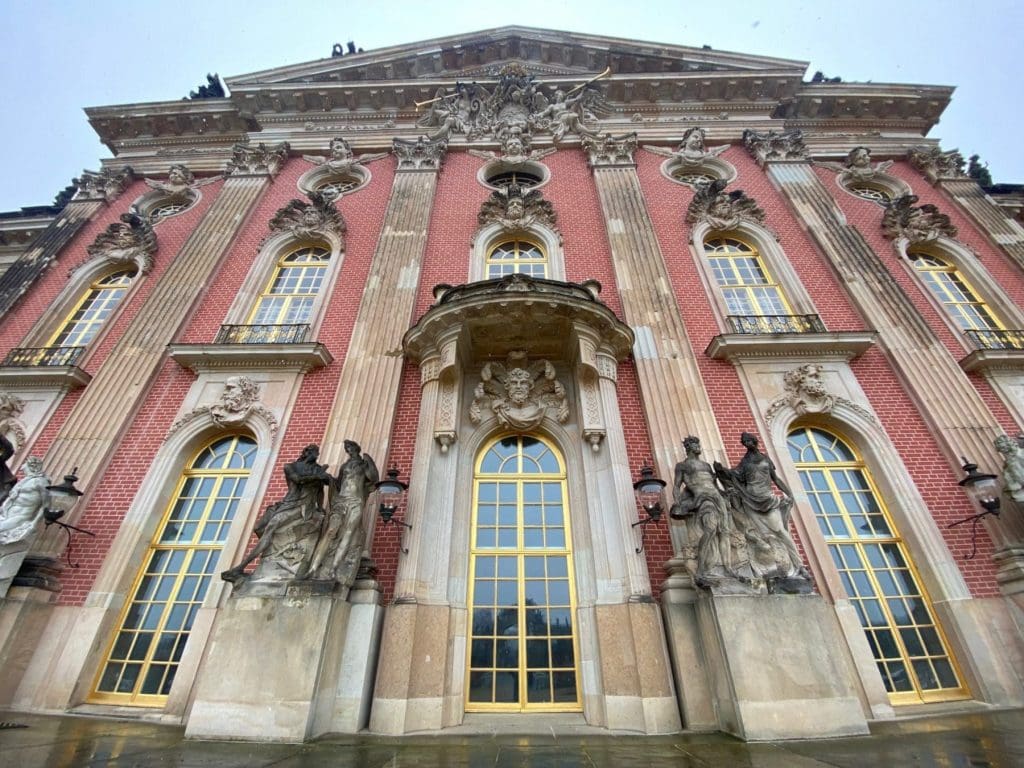
It was also arguably the last great Baroque palace in Prussia, as the architectural style was no longer in vogue even when built. However, Frederick liked baroque, so baroque his New Palace was. The tour of the palace takes you through the distinctive grotto hall with shells inlaid into the wall – Frederick was also a fan of Rococo –, the spectacular Marble Hall, and various other rooms including the chamber where Frederick III died.
It makes for an interesting hour’s tour, but for me the real beauty of Sanssouci Park lies outside. So, left to my own devices I was pleased to get lost and found in the vast open spaces, discovering the Roman Baths and Charlottenhof Palace, on my route back to Potsdam.
Sanssouci Park Photo Gallery
Potsdam Conference
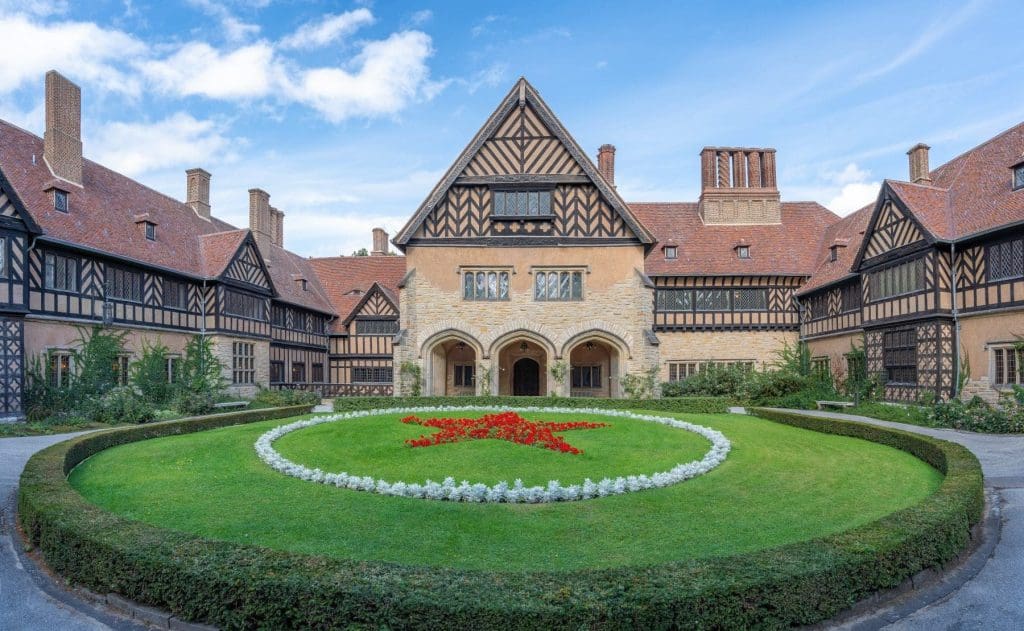
Along with its palaces, Potsdam Germany is arguaby best known for the Potsdam Conference held from 17 July to 2 August 1945 at Cecilienhof, and which led to the Potsdam Agreement.
The Potsdam Conference was attended by USSR President Joseph Stalin, US President Harry Truman, as well as both Clement Atlee and Winston Churchill for the UK, as the former replaced the latter as Prime Minister during the conference. At the Potsdam Conference it was agreed how to administer Germany following its surrender in World War II; dividing Germany into four occupation zones, establishing its eastern border, recognising the Soviet-backed group as the government of Poland, and partitioning Vietnam at the 16th parallel. Hence paving the way for much future confict.
A City Tour of Potsdam Germany
I had arrived the previous day, taking the train to Potsdam from Berlin – the RB22 runs directly from Berlin Airport. After checking into my hotel, the charming Hotel am Großen Waisenhaus, which used to be an orphanage, I met Eva for an architectural tour of Potsdam.
If Sanssouci Park is very much the inspiration of Frederick the Great, then Potsdam itself is much indebted to his father Frederick William I, or the Soldier King.
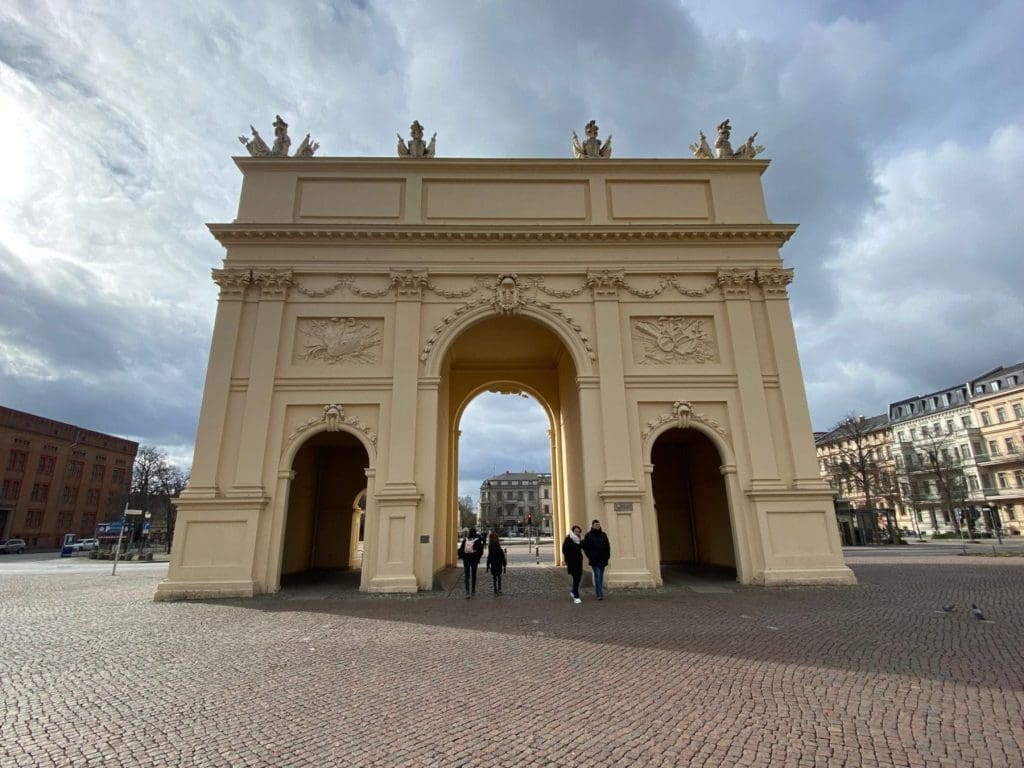
Potsdam was built for Frederick William from 1713 to house his army. Many of the buildings in the centre of Potsdam were built on his orders on the condition that soldiers were billeted in some of the rooms. According to Eva, some 1,200 houses were built in 27 years, with an emphasis on individuality rather than repetition, which can be noticed as you stroll along the main Brandenburger Strasse.
Not that Potsdam is totally devoted to the Soldier King. Frederick the Great had his own Brandenburg Gate constructed on the model of the Constantine Arch in Rome, some twenty years before its more famous namesake in Berlin. Next to Potsdam’s Brandenburg Gate you can also see fragments of the old city wall, dating back some 300 years.
Walking around the city, you can find examples of the wooden structure hidden beneath the stucco façade on many of the buildings, a great example of which is the Golden Arm Museum.
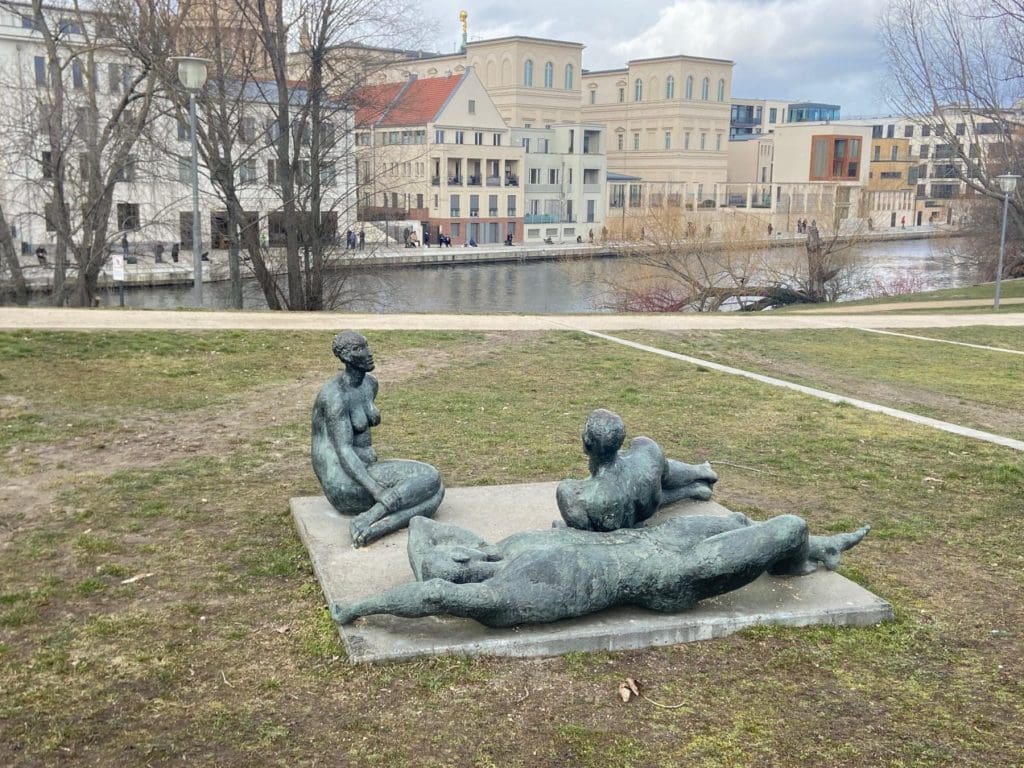
Part of Potsdam is referred to as the Dutch Quarter, for it was built by families who came here from the Netherlands in the 1730s and 1740s. Some 60 families came to the city during this period, but only 20 stayed. It is easy to identify this area by the red brick. One of these buildings, The Big Dutch House on Lindenstrasse became the old Stasi building where you can see the confined spaces in which inmates were held.
Potsdam was heavily bombed in the war particularly in the final weeks. Some of the buildings in the city centre reflect an attempt to replicate the style of the original 18th century houses, however around the centre new apartment blocks were built in typical Soviet Bloc style from the 50s. Despite their undoubted functionality, just like the construction by Frederick William I 250 years earlier, the buildings have an individuality that Eva is keen to point out as we wander around the city.
Another building of note included in Eva’s tour is the Steam Engine Building, which was constructed in 1841-3 to pump water to the tower in Sanssouci Park, and is nicknamed the Potsdam Mosque for obvious reasons as you stand beside it.
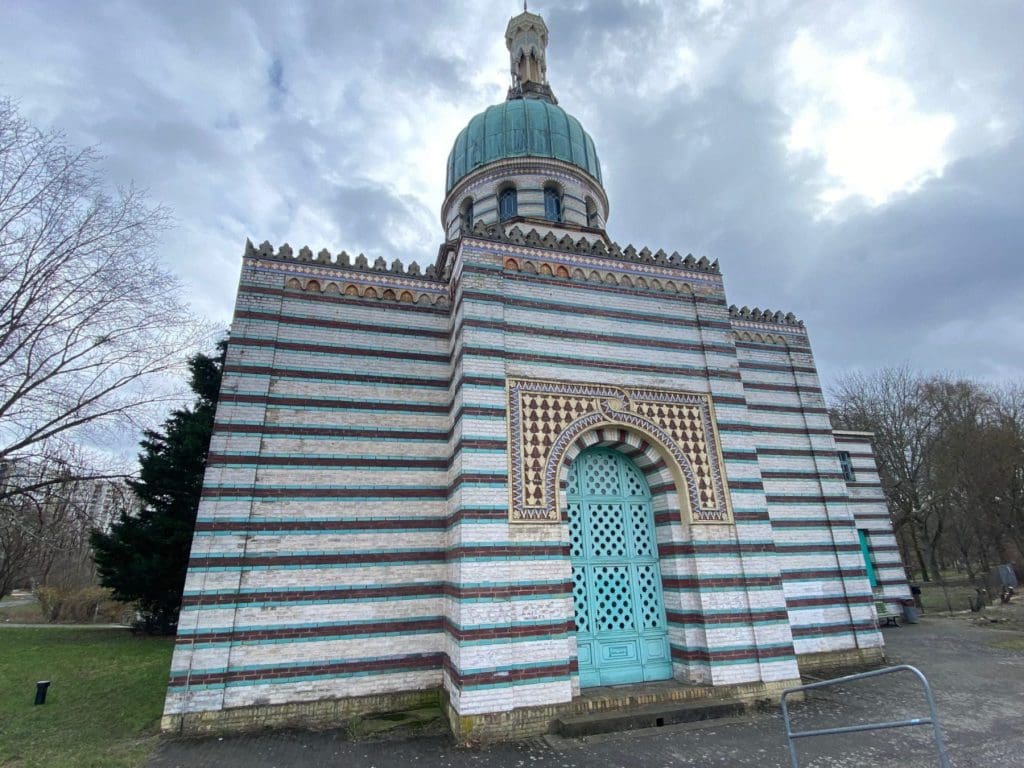
Potsdam Museums and Culture
Our tour concluded at the Das Minsk museum, where there was an exhibition of work by Ruth Wolf-Rehfeldt, called Nothing New. Outside the museum is a really impressive statue by Wolfgang Mattheuer, which I was informed by the helpful staff is entitled Gesichtzeigen (“Showing Face”). The museum opened in September 2022, and serves excellent coffee and cake in its café.
On my second afternoon, having recovered from my ramblings in the park, I went to the Museum Barberini to see an interesting exhibition on Sun through the ages, from the myths of Daedalus and Icarus, and Phaethon to the Sun King. The museum also has an exhibition of Impressionist paintings featuring some of the collection of the museum’s founder Hasso Plattner, including 38 Monets.
The museum is located in the old market area of town, which also includes Nicolai Church and the old City Hall, both of which I had visited the previous day on Eva’s tour.
Potsdam Restaurants
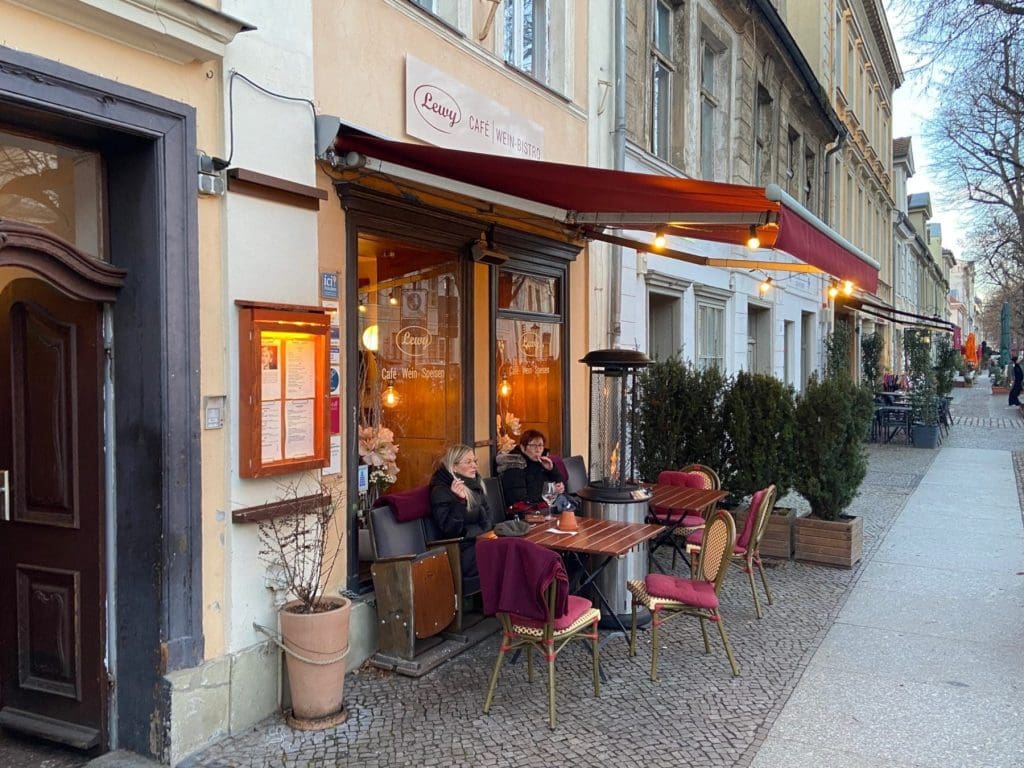
On my first evening I had dined at Fliegender Holländer Restaurant, which as you might suspect is in the Dutch Quarter. There I had enjoyed some traditional German fare which was well served. For my last night I wanted something more local in feel, so I dined at Café Lewy, which has wonderful wood pannelling around the walls and a convivial, warm atmosphere, aided by the half litre of excellent Languedoc.
Sufficiently fortified I retired to my room having had a wonderful walk around Potsdam and its amazing Sanssouci Park, readied for an even longer walk the following day around the claustrophobic halls of ITB Berlin, and to reacquaint myself with Berlin and Checkpoint Charlie.
Potsdam Germany Photo Gallery
Potsdam from Berlin
It is easy to travel from Berlin to Potsdam Hbf by S-Bahn, taking around 30 minutes. The Berlin ABC travel pass includes Potsdam.
Potsdam Hotels
We recommend the Hotel am Großen Waisenhaus, 28/29 Lindenstrasse, Potsdam. This Baroque building was originally a barracks for women designed by Dutch master builder Jan Bouman. It was converted into a hospital for children in 1820, and subsquently became a hotel. The fresh juice at breakfast was amazing.
Things To Do in Potsdam Germany
For more information on the things to do in Potsdam Germany, click here.
All photos unless stated: Mark Bibby Jackson.
